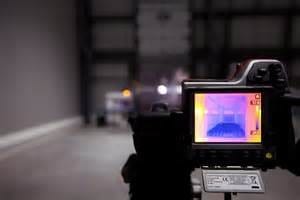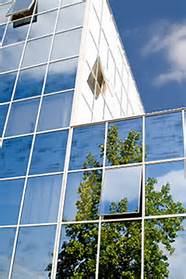Costs of commercial energy audits
 Is your energy bill too expensive, but you’re not sure how to reduce your energy use? We have helped hundreds of businesses cut their energy costs, and we can help you too. In this article, we will discuss the common procedures for conducting a commercial energy audit as well as the typical factors that will affect the commercial energy audit cost cost, such as the level of energy audit, size of facility, type of business, scope of assessment, and extent of available documentation.
Is your energy bill too expensive, but you’re not sure how to reduce your energy use? We have helped hundreds of businesses cut their energy costs, and we can help you too. In this article, we will discuss the common procedures for conducting a commercial energy audit as well as the typical factors that will affect the commercial energy audit cost cost, such as the level of energy audit, size of facility, type of business, scope of assessment, and extent of available documentation.
What is a Commercial Energy Audit?
An energy audit determines the most effective low-cost means of reducing energy use. A commercial energy audit provides a clear breakdown of how, where, and when electricity is used in your building, as well as the current electric costs and how electric rates apply to the facility and its uses. It presents a specific list of potential modifications with engineering and financial analyses that, if implemented, will yield energy savings. A ranking is applied to the recommended modifications based on financial and other relevant benefits and trade-offs.
The American Society of Heating, Refrigeration, and Air-Conditioning Engineers, Inc. (ASHRAE) defines three levels of energy audits:
- Level 1 – Walk-through Analysis
- Yields the most obvious and unquantified assessment of quick-hitter changes that will help with energy costs.
- Level 2 – Energy Survey and Engineering Analysis
- Provides prioritized, quantified recommended modifications sufficient for making business decisions and budgeting for each recommended modification.
- Level 3 – Detailed Analysis of Capital-Intensive Modifications
- Presents elaborate project cost and savings calculations with a high level of confidence sufficient for capital investment decisions.
The outcome of each commercial energy audit varies due to the operating conditions and possible solutions that are unique to each business.
How Much Will a Commercial Energy Audit Cost?
To put it simply, it depends. What business is being audited, and why is it being audited? The cost of a commercial energy audit is dependent upon the factors listed below:
Level of Energy Audit
Depending on which level is recommended for the business, there is possibility for additional phases to address specific projects based upon the findings of the previous level.
Size of Facility
Buildings with more square feet of floor space and multiple floors will cost more to have audited than a small facility with less area to assess.
Type of Business
A big energy user, such as a manufacturing facility that must light a large space with multiple machines running simultaneously, will cost more money than a small retail space.
Scope of Assessment
An audit of the interior of a single building will cost less than an audit of a campus—multiple buildings needing assessments of the interior and exterior of each building.
Interior aspects of a building that may be analyzed during the assessment are:
- Equipment and technology – age of technology and equipment affects that amount of energy
 being consumed
being consumed - Building conditions—integrity of walls, ceilings, and insulation
- Layout of equipment—organization of technology in isolated areas leads to concentrations of energy
Exterior aspects of a building that may be analyzed during the assessment are:
- Stains—water infiltration, trapped moisture, drain spout omission, blockage, site drain paths
- Damage—roof, walls and/or along foundation
- Roof access way(s)—effect on air infiltration, stack effect, impact
- Insulation—type, amount, and condition in walls, roof, and foundation
- Window orientation— which direction they face, size, quantity of each type
- Outdoor lighting—exterior building lights, parking lot, landscape, etc.
- HVAC equipment—type (heat pumps, air conditioners, air handlers, exhaust fans), capacity, efficiency, condition, and location
- Building shading—trees, other buildings, overhangs, etc.
- Utility service— type of supply (gas, electric), number of meters, and meter location
- Backup power system—generator type, fuel source, and capacity
Extent of Available Documentation
The cost of the energy audit will increase if documentation is not readily available and requires extra research during the audit process.
Performing an energy audit is helpful for prioritizing the recommended modifications. No matter the reason, a careful and thorough energy audit will provide you with the analysis, financial impact, and other information useful to both short- and long-term planning to address any and all of the concerns listed above.
Ambipar Response EMS, we consider more than just your buildings. We acknowledge the ways in which your business uses energy in its business processes as well as the ways in which your business adapts and grows. Your energy audit integrates your business and buildings into a common energy picture focused on solutions for your business, not just how to condition and light a better building shell.
A commercial energy audit performed by Ambipar Response EMS, Inc. addresses those concerns with our guarantee that we will determine savings at least equal to the cost of the energy audit—or it’s free. We have conducted commercial energy audits for prices ranging between $1,000 and $15,000 depending on the factors discussed in this article. EMS has conducted hundreds of energy audits of commercial and industrial businesses. Every audit determined annual savings that exceeded the cost of the energy audit, typically more than twice the one-time cost. If you are interested in an energy audit performed by Ambipar Response EMS, please contact us!


